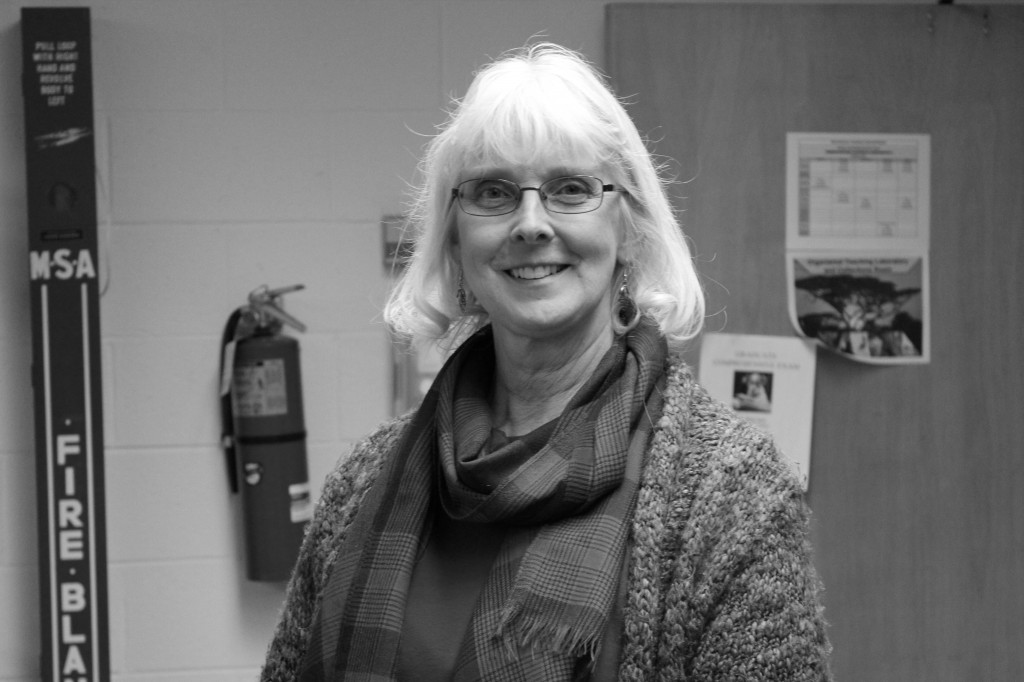

Photo Credit / Jamie Reese
BY ZACHARY GOTTHARDT
SC Staff Writer
On February 28, Diane Husic, Ph D. of Moravian College presented her work on citizen science and regional climate change. Her research centered on phenology, with data contributed by the general public.
Dr. Husic is a biochemistry professor at Moravian College. However, she was previously a biochemistry professor at ESU for 16 years.
She was also the chemistry department chairperson, and she helped develop the biotechnology program at ESU.
Throughout her career, Dr. Diane Husic has focused much of her research on climate change.
As an expert in the field, she has been invited to numerous global conferences on the subject. Global climate change is a relatively new issue, and Husic has been able to watch the science evolve along throughout its short lifespan.
Husic commented that recently there has been heightened awareness about climate change among students. With the advent of the internet, increased communication, and better understanding of the underlying mechanisms, students generally tend to care about the issue more than the general public.
Awareness of climate change, however, is accompanied by a phenomenon Husic calls the “New Norm,” a perpetual state of warmer temperature.
College students ranging from about 18 to 24 were born into the warming temperatures, and therefore do not have memories of a time when global temperatures were cooler.
According to Husic, only 48 percent of the general population considers man-made global warming to be an issue.
Students are generally the exception — many believing in the issue.
She also recognizes that global warming has quickly become a political issue.
In an attempt to increase awareness and have a community-wide discussion about climate change, Dr. Husic has employed citizen science.
Citizen science is the practice of using amateur scientists and volunteers to collect data and increase participation in scientific experiments. It allows Husic to bring individuals from the community together to learn about climate change while getting free volunteers and manpower.
Specifically, Dr. Husic is using citizen science in a phenology experiment.
Phenology is the study of natural cycles with respect to time. Literally, phenology means “to study things as they happen.”
For the most part, phenology looks into the events that we notice on a seasonal basis.
A simple example would be the return of migrating birds every year. A phenologist would study aspects of this event such as when birds begin to return, and which species are returning first.
Phenology is used to determine human seasonal events, as they include more than just biological cycles. It is used to determine ski seasons, bird watching times, cultural events, and gardening practices. In addition, it has also been used to detect ecological issues.
For example, phenological data has suggested that birds are returning from their migration weeks earlier than they were several decades ago.
Diane Husic has created the Eastern Pennsylvania Phenology Project to determine if data collected by the public could be used successfully to detect ecological events over time.
Husic asked for volunteers to gather data on 45 common species found in Eastern Pennsylvania. Her hope was to garner support from people who would not have participated in an ecological survey.
She was willing to accept data from any source and on any species, but was hoping for the 45 specific species.
After the network was created, Husic received data from 18 different counties in her first year. In one year, she received 210,000 data points from 1967-2011.
Data came from a variety of sources, whether it was official scientific journals (some of which was contributed by ESU faculty), the personal journals of children (also contributed by ESU faculty), or—in one case—the writings on a shed.
Because some of the data came from bizarre and poorly documented sources, Husic admits that the validity of the data could be questioned, but she accepted it anyway.
Ironically, with all the data contributed, she received virtually no data on the 45 species she requested.
In the future, Diane says she will have to be more specific on the data she requests.
Diane wanted to see how ecosystems were changing over time, and the data was able to derive some conclusions. For example, the aforementioned bird migration changes were noted by compiling the data sent in by the volunteers.
Dr. Husic is not sure if the project was a success; the data is still coming in and being analyzed on a daily basis, and will eventually be published in a journal.
However, she is pleased that she has created a network of dedicated volunteers for work in the future.
Anyone who wishes to contribute to the Eastern Pennsylvania Phenology Project can email their data to phenology@lgnc.org.
Email Zachary at:
zgotthar@live.esu.edu

